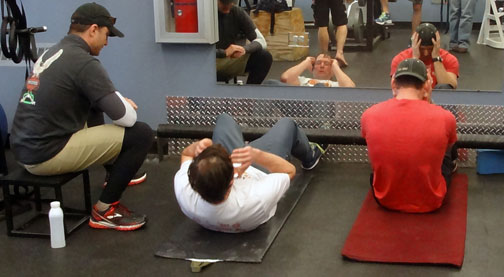Wildland firefighting and field work demands a high level of muscular and aerobic fitness to perform safely in difficult environments. Being prepared to work in steep terrain, extreme temperatures, high altitude, and smoke, while maintaining a reserve work capacity to meet unforeseen emergencies, is critical for wildland firefighters. Some smokejumpers receive Emergency Medical Technician (EMT) training, which is updated annually, so they can deal with injuries that may result from parachuting or firefighting.
FOR ROOKIES
Rookie Training is conducted in Boise by a cadre of BLM smokejumpers. It begins in mid-April and lasts five weeks. During this time trainees are evaluated continuously on the following factors:
- Successful completion of a physical test is necessary before a rookie may progress in the program
- Ability to learn Smokejumper skills and successfully perform these skills
- Hands-on training will include mock parachute training, pump and chainsaw use and maintenance, tree climbing, water landings, and parachute jumps
- Ability to function as a team member
- Overall attitude and work ethic
- Ability to remain productive in a stressful environment.
RETURNING SMOKEJUMPERS
Successful completion of a physical test is required before a smokejumper can return to the program.
Refresher training is then required in parachuting, tree climbing, and jump operations.
A daily physical training program is established and required throughout a smokejumper's career, which includes running, push-ups, sit-ups, and pull-ups.









